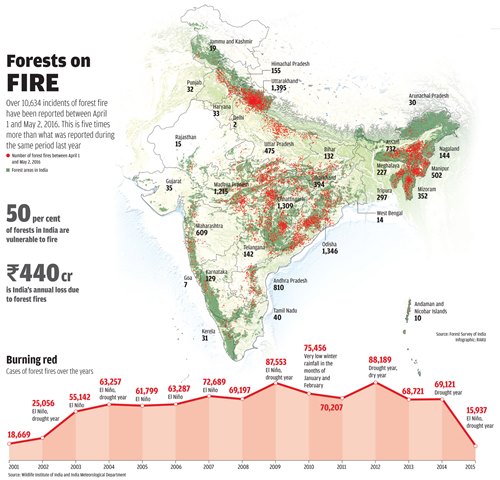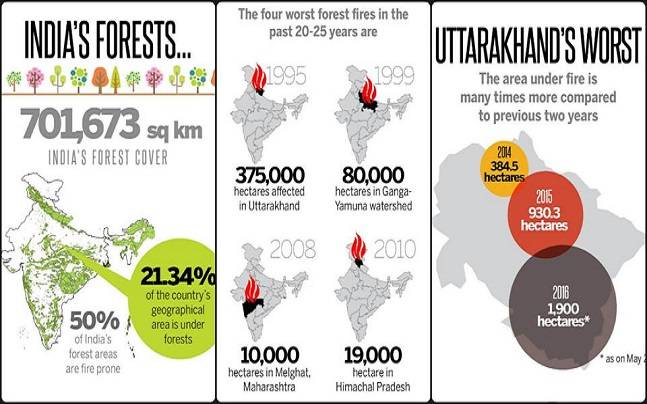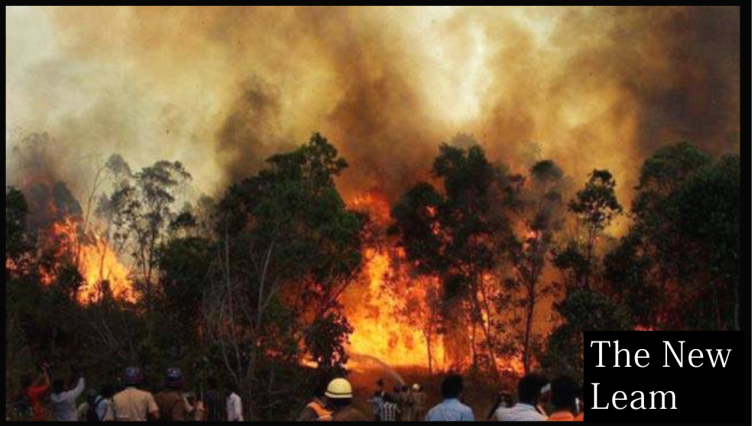PERSPECTIVE
It is acknowledged that annually several hectares of forests burn, leading to destruction of life, trees and livelihood for a great section of the population. It is an immediate need of nation-states and people to address the issue and develop alternatives in order to avert the crises and save the forests.
Editorial Team
The issue of forest fires is one that the interest of nation-states and people. It must be realised that forest fires cannot be tackled or reduced unless the society and the government work in coordination to investigate into its causes and derive alternatives that negate the occurrence of forest fires Forest fires in Bandipur, Odisha destroyed more than thousands of hectares of land and claimed the lives of several people in 2017.

A recent forest fire in Uttarakhand brunt more than 4000 hectares of land and claimed more than seven lives. A significant report by Parliamentary Standing Committee on Science and Technology, India stated that the nation has seen a 55% rise in the number of forest fires as on December 2016.
In India the Himalayan forests and the forests of deciduous trees in Andhra Pradesh, Madhya Pradesh, Karnataka, Odisha, Assam and Jharkhand are most affected by forest fires. In the unfolding of the environmental process forest fires served the purpose of cleaning the forest of waste like dead plants, dry grass etc. Forest fires can be produced by natural and man-made reasons.
A major issue unfolds itself due to forest fires spreading to great sections of the forest and damaging trees and impacting life inside and surrounding the forest region. There are several effects that forest fires have such as soil erosion, depletion of ozone layer, loss of forest trees and destruction of human livelihood. A great variety of man-made factors lead to fires in forests like escaping accountability for the illegitimate felling of trees, shifting cultivation.

The forest fires in Bandipur and Uttarakhand are labelled as forest fires that occurred due to man-made causes– leading to a perpetual blame game between the government and the local inhabitants. Reports show that 60% of the rural population depends on the forest for both timber and non-timber forest produce for livelihood. The coming in of British colonial state in India led to several restrictions on how local populations could relate to the forest. Prior to colonial rule, the inhabitants of forest areas could freely use the forest for living and livelihood. In 1865 various rules were introduced about relating to the forest and utilising its resources.
In 1952 the Government of India derived the National Forest Policy which stated that the rights of populations inhabiting forests are not over national interest. This was understood as an efficient infrastructure to ensure that forests are not utilised excessively. It is being stated by several communities that in reality the nations-state is deriving great profits from forest resources but not allowing local communities to make use of the forests.
In states like Bengal the local inhabitants assert their customary rights to the forests but have been compelled to vacate forest lands as officials have alleged the population damaged wildlife and natural resources. Addressing the issues in 2014, the Government of India introduced the National Mission for Green India to protect and increase the forest cover of the country by involving local populations in planning and decision making. It was in 2014 that the Compensatory Afforestation Fund Management and Planning Authority (CAMPA) came into existence .
The Bill was passed to regulate the usage of unspent money raised by the central and the state governments. To regulate the finances achieved by the government in diverting the forest land the Compensatory Afforestation Fund Bill (CAF) was passed in 2015. The Bill did not lead to significant alteration in the destruction of forests. The insufficient mechanism to control forest fires lead to the annual damage to forests in the country. The issues between the forest people and the nation-states have led to inefficient infrastructure to tackle forest fires.India, witnessed 46% increase in the number of forest fires across the last 16 years (2003-17).
India also witnessed a 125% rise fires in just two years (2015 to 2017).In 2017, the maximum number of forest fires were reported from Madhya Pradesh (4,781) Odisha (4,416) and Chhattisgarh (4,373). The nation loses more than 500 crore due to forest fires annually. The Forest Fires Prevention Scheme u=underwent alterations to deal with the issues. Over the recent years 46-65% allocated for forest m=management was not released. Forest budget has reduced 14-72%.
Uttarakhand is experiencing great forest fires as several hectares of forest are destroying. It is estimated that more than 90% of the forest fires are man- made. Several villagers set the forests on fire to regenerate quality if soil. As temperatures rise inflammable materials in the forests get ignited, leading to forest fires. Other significant reasons for forest fires are the timber mafia that set forests burning. It becomes extremely significant that in areas effected by forest fires soil conservation mechanism are initiated, local populations are enabled to deal with the issues, officials are trained properly, disaster management teams are equipped and mechanism to avoid forest fires are built to address the issue.
***














